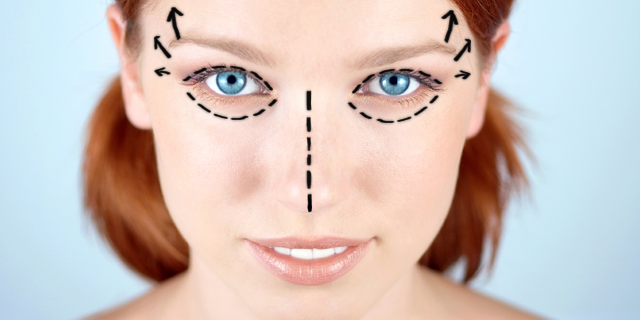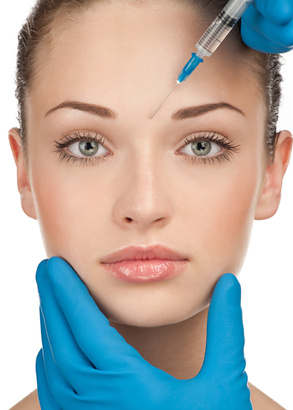Liquid Facelift: Look Years Younger, Without Surgery!
Turn Back Time With a Non-Surgical Liquid Facelift!
The liquid facelift is a non-surgical cosmetic procedure that has become increasingly popular in recent years. Also known as a non-surgical facelift, this procedure uses dermal fillers and other injectables to restore volume and smooth out wrinkles and fine lines on the face.
According to the American Society of Plastic Surgeons, over 2 million injectable treatments were performed in the United States in 2020, with Botox and dermal fillers being the most popular procedures. The popularity of combining multiple injectable treatments into one non-surgical liquid facelift procedure is on the rise due to its minimally invasive nature and the relatively low cost compared to a surgical facelift.
In this article, the injectable experts at AMAE in the Troy, MI area will explore the details of the liquid facelift, including what techniques are used, what fillers are used, what results can be expected, and how it compares to a surgical facelift.
Fillers Used in Liquid Facelifts
The liquid facelift involves a combination of Botox, dermal fillers and other injectables into one procedure to achieve a more youthful appearance without surgery. The specific techniques and fillers used will vary depending on the patient’s individual needs and goals.
For example, adding volume to sunken or flat cheeks pulls skin on the lower upward and makes it more plump and tight – for a dramatically lifted look!
Some of the most commonly used injectables used in a liquid facelift include:
Hyaluronic acid fillers: Hyaluronic acid is a naturally occurring substance in the body that helps to hydrate and plump the skin. Fillers such as Juvéderm and Restylane use hyaluronic acid to restore volume to areas of the face that have lost fullness due to aging.
Calcium hydroxylapatite fillers: These fillers, such as Radiesse, use a mineral compound to add volume to the face and stimulate collagen production, which helps to lift, firm, and tighten the skin.
Poly-L-lactic acid fillers: These fillers, such as Sculptra, work by stimulating the body’s natural collagen production over time, resulting in a gradual improvement in skin texture and tone.
Botox and other similar injections (including Dysport and Xeomin): These are used to relax the muscles in the face that cause wrinkles and fine lines, particularly around the eyes and forehead – including the vertical “elevens” between the eyes, horizontal wrinkles across the forehead, and crows’ feet on the sides of the eyes.
Platelet-rich plasma (PRP) injections: PRP injections involve drawing a small amount of the patient’s own blood and processing it to concentrate the platelets which contain skin rejuvenating growth factors. The plasma is then injected back into the face to stimulate collagen production and improve skin texture on a cellular level.
Kybella: In some cases, patients with fat below the chin may also wish to undergo Kybella injections to remove submental fat and help reduce the appearance of ‘jowls’. If Kybella injections are employed, a separate treatment session may be required.
Results & Duration of Liquid Facelifts
The results of a liquid facelift are typically seen immediately after the procedure and can last anywhere from 6 months to 2 years or longer, depending on the type of injectables used and the individual patient’s response. While the results of a liquid facelift are not permanent, many patients find that they can achieve prolonged desired results with regular touch-up treatments.
While the results of a surgical facelift are typically more dramatic and longer-lasting than those of a liquid facelift, the liquid facelift has several advantages, including: no recovery time, no need for general anesthesia, an extremely low risk of complications, significantly less discomfort, and no scarring.
Good Candidates for a Liquid Facelift
A good candidate for a liquid facelift is someone who is looking to improve the appearance of mild to moderate signs of aging on their face, such as fine lines, wrinkles, and loss of volume. They should also have enough facial volume to achieve the desired results with injectable fillers and be in good overall health.
It is recommended that patients who are pregnant, breastfeeding, or have certain medical conditions that affect blood clotting, such as hemophilia, should avoid a liquid facelift. Additionally, patients who have a history of allergic reactions to any of the injectable products used in the procedure should obviously not undergo a liquid facelift.
Choosing a Liquid Facelift Provider
When choosing a liquid facelift provider, it is essential to select a highly experienced plastic surgeon or trained nurse injector operating under the guidance of a plastic surgeon. A skilled medical provider, like top board-certified plastic surgeon Dr. Ali and the nurse injectors at AMAE Plastic Surgery in the Troy, MI area will take the time to assess your individual needs and goals, create a personalized treatment plan, and use their expertise to achieve beautiful, natural-looking results.
In addition to the qualifications and experience of the provider, it is important to consider their approach to taking into account each patient’s unique facial features, including their skin type and tone, bone structure, and ethnic background. The provider should have experience working with patients of diverse ethnicities and be sensitive to the importance of preserving the patient’s natural beauty and cultural identity.
Liquid Facelifts | Troy, MI Area
If you have mild to moderate signs of aging on your face – including lines, wrinkles, sagging skin and loss of volume – schedule an appointment at AMAE Plastic Surgery & Med Spa in the Troy, MI area with our injectable experts.
We will create a customized liquid facelift plan just for you – so you look younger and more beautiful – and love the skin you’re in!







